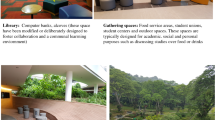Abstract
Industrial activity of the past has created several contaminated brownfields, which, particularly in remote areas, are difficult to remedy from an economic point of view. In this project, a novel approach for in-situ removal of mineral hydrocarbons from soil was investigated. The underlying concept was to flush contaminated soil with emulsions of plant oil in water, to suck off the contaminant-laden emulsion from the ground water level and to separate oil and water using oil-binding non-wovens. The process development was carried out in a research project, where students from a university of applied sciences and from a technical college were involved. Based on the specific case of brownfield remediation, a collaborative learning experience for the students was created. Environmental protection and safeguarding is a topic of high interest to students, and there was a high motivation to obtain results. Due to the COVID19 pandemic, most collaboration was handled remotely via virtual teams.
The chosen brownfield for this case study was a former petroleum refinery site in Lower Austria, were up to 40 g/kg of mineral hydrocarbons were found in the soil in the non-saturated zone. Mineral hydrocarbons show good solubility in plant oils. Emulsions of 5–10% of rapeseed oil in water were prepared and chosen, to have better wettability of the ground materials and lower viscosity. The goal was to develop a process that can extract 80–90% of mineral hydrocarbons in the soil, and which leaves only a minor fraction of the plant oil in the soil.
When the trials, which were carried out in the lab and in the field, showed that the permeability of soil is very low, it was decided to develop a prototype for on-site soil washing. The soil of the chosen brownfield is partly made from gravel and sand, where an in-situ flushing process is possible. However, there is also clay, and that material hardly lets water or emulsion penetrate. For the on-site washing process, a laboratory-scale prototype was developed. It was built by the Linzer Technikum (LITEC) and tested with different soils at the university of applied sciences.
The prototype could be built by LITEC, with an extraction vessel made of steel and a mixer. Trials were done to determine the degree of extraction of mineral oil and the fraction of plant oil that is not recaptured. 500 g of soil were mixed intensely with 500 g of solvent (water and emulsions). Table 1 presents the results for sand and clay.
The process of washing out mineral hydrocarbon contamination from soil was found to show a good potential. The ground material should be sieved to remove coarse material (>10 mm), and the finer fraction can be subjected to the washing of plant oil in water, where the plant oil fraction can be between 5 and 50%, depending on degree of contamination. To reduce the amount of non-recaptured plant oil, a second and third washing cycle with a lower oil fraction, or with pure water, can be applied.
Access this chapter
Tax calculation will be finalised at checkout
Purchases are for personal use only
Similar content being viewed by others
References
Höhere Technische Lehranstalt: https://de.wikipedia.org/wiki/H%C3%B6here_Technische_Lehranstalt. Accessed: 5 Jun 2022
Pachatz, W., Zafoschnig, A.: Education standards and competence-oriented curricula – the austrian technical colleges take a new approach to excellence. Int. J. Eng. Ped. 1(3), 20 (2011). https://doi.org/10.3991/ijep.v1i3.1818
Mattessich, P.W., Monsey, B.R.: Collaboration—What Makes it Work: A Review of Research Literature on Factors Influencing Successful Collaboration. Amherst H. Wilder Foundation, St. Paul, Minn (1998)
Hord, S.M.: A synthesis of research on organizational collaboration. Educ. Leadersh. 43(5), 22–26 (1986). https://eric.ed.gov/?id=EJ334200
Mattessich, P.W., Murray-Close, M., Monsey, B.R.: Collaboration: What Makes it Work, 2nd edn. Fielsstone Alliance, Saint Paul, Minn (2008)
Czajkowski, J.M.: Success factors in higher education collaborations: A collaboration success measurement model. Dissertation, Capella University. https://search.proquest.com/openview/68fb9fee0d1feb6b751d1c78b1399a61/1?pq-origsite=gscholar&cbl=18750&diss=y (2006)
Mansur, A.A., Taha, M., Shahsavari, E., Haleyur, N., Adetutu, E.M., Ball, A.S.: An effective soil slurry bioremediation protocol for the treatment of Libyan soil contaminated with crude oil tank bottom sludge. Int. Biodeterior. Biodegradation 115, 179–185 (2016)
Gou, Y., et al.: Enhanced degradation of polycyclic aromatic hydrocarbons in aged subsurface soil using integrated persulfate oxidation and anoxic biodegradation. Chem. Eng. J. 394, 125040 (2020)
Lackner, M., Hribernig, T., Braunschmid, V., Hasinger, M.S., Müllern, K., Ribitsch, D.: Soils using plant oil extraction followed by enzymatic cleavage and microbial degradation, WiPP (work in progress poster). In: 38th International Symposium on Combustion, The Combustion Institute, Adelaide, Australia, 24–29 Jan 2021
Lackner, M., et al.: Vegetable oil extraction of hydrocarbons from soil and subsequent separation via non-woven fabrics. Recy & DepoTech. (2020)
Braunschmid, V., et al.: Enzymatic degradation of weathered petroleum hydrocarbons. Recy. & DepoTech. (2020)
Author information
Authors and Affiliations
Corresponding author
Editor information
Editors and Affiliations
Rights and permissions
Copyright information
© 2023 The Author(s), under exclusive license to Springer Nature Switzerland AG
About this paper
Cite this paper
Ramaseder, N., Probst, A., Lutz, M., Hribernig, T., Lackner, M. (2023). Collaborative Learning Supported by a Brownfield Remediation Case Study. In: Auer, M.E., Pachatz, W., Rüütmann, T. (eds) Learning in the Age of Digital and Green Transition. ICL 2022. Lecture Notes in Networks and Systems, vol 633. Springer, Cham. https://doi.org/10.1007/978-3-031-26876-2_1
Download citation
DOI: https://doi.org/10.1007/978-3-031-26876-2_1
Published:
Publisher Name: Springer, Cham
Print ISBN: 978-3-031-26875-5
Online ISBN: 978-3-031-26876-2
eBook Packages: Intelligent Technologies and RoboticsIntelligent Technologies and Robotics (R0)




